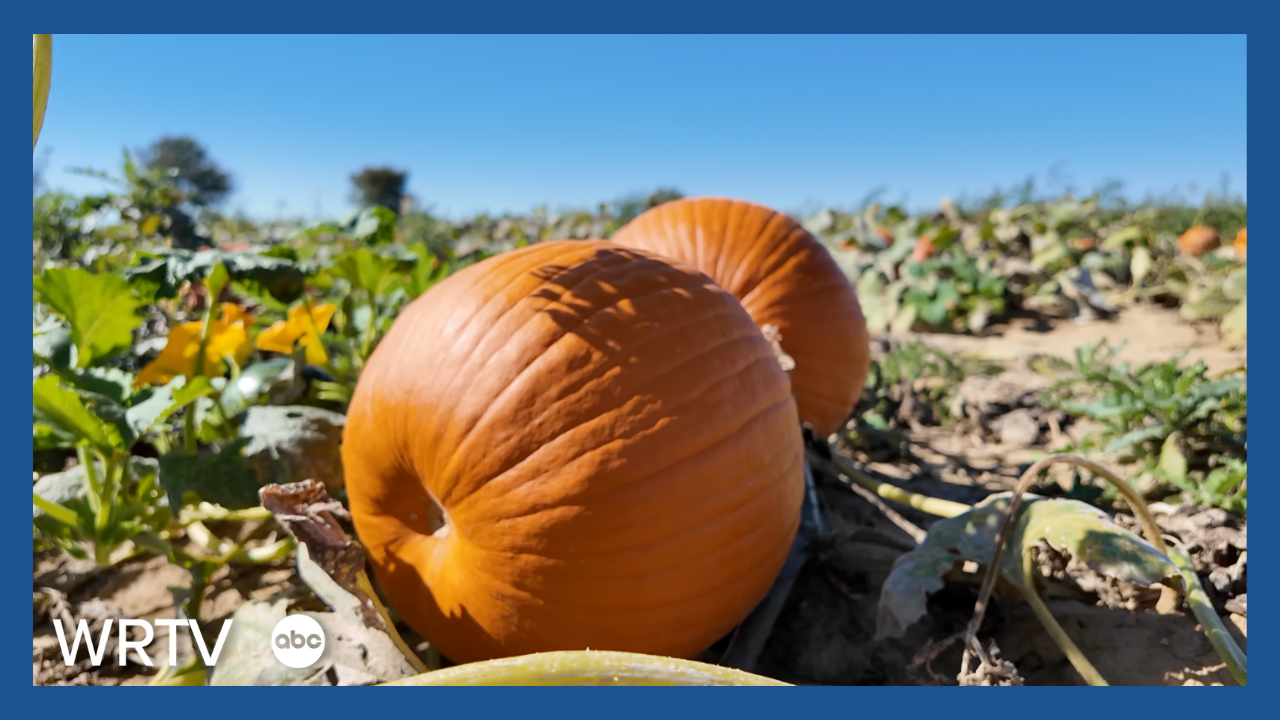Temperatures are cooling, and you've probably found yourself thinking about fall festivities.
The Chandler family is welcoming the fall weather, as they're hoping it means more customers will visit Chandler's Orchard and Country Market.
The family has owned the land, which sits off of US 40 right by the Hendricks and Putnam County line, since 1975.

"Customers don't want to pick apples and pick a pumpkin when it's 95 degrees," explained Jerry Chandler. "I can't blame them, because I don't like to be out when it's 95 degrees!"
Jerry and his son Matt Chandler met with me on a crisp, sunny afternoon. While the pumpkin patch looked beautiful, the season didn't start that way.

Both men recalled the rounds of rain they kept seeing this spring while trying to plant the pumpkins. You can still see ruts in the field today, reminders of the difficulties they had.

"For the most part, I'm fairly happy with the crop," Matt Chandler said.
The fields were full of multiple types of pumpkins, and the crop seemed abundant.

The rainy spring did cause another issue for the Chandlers.
Matt Chandler scoured the field and found one to break open for me.
"Some sort of disease, a rot that set in on it," Matt Chandler said as he described the inside of the pumpkin.

Is it common to see pumpkins with some rot?
"Every year, you get a few," Matt Chandler continued. "All that early moisture really harbored some of that disease in the soil."
While they can't change the weather, researchers like Stephen Meyers look for ways to help farmers like the Chandlers.
"Indiana is a pumpkin state, and we're proud of that," Meyers said with a grin.
Indiana is one of the nation's leading pumpkin producers.
Meyers works at Purdue University in the Department of Horticulture. He and his research team are currently working on a weed science trial at Meigs Horticulture Research Farm.

The pumpkin patch at Meigs doesn't look like your typical pumpkin patch, as it is covered in weeds.
"We try to understand how weeds interact with crops, including pumpkins," Meyers explained. "How they affect crop yield and quality."

This knowledge could help manage weeds and produce a better crop.
Students involved in the research were searching through the weeds and harvesting pumpkins while I visited.
"We'll weigh each one, because we want to see if our treatment has an impact on pumpkin fruit size," Meyers continued.

Every pumpkin helps farmers' bottom line, especially since there is such a short selling season each fall.
How did the pumpkin crop turn out across Indiana?
"It varied from the northern part of the state to the southern part of the state," Meyers said. "In the south, they had a lot of consistent rainfall that came maybe at inopportune times."
What does this mean for the yield in 2025?
"The crop might suffer in parts of southern Indiana," Meyers stated. "Whereas in other parts of the state, it's going to be just fine."
The Chandlers' faces lit up when I mentioned I had visited Meyers, as they have reached out to him for assistance several times with their crops.

"One of the interesting things about Purdue, and especially Purdue Extension.. If there's an issue with the plant, we know whether to call the pathologist, the entomologist, the weed specialist," Jerry Chandler shared.
Now that the crop has successfully made it to fruition, the Chandlers are hoping for more business.
"We're hoping that this weekend, with the forecast that we'll have several people out," Jerry Chandler shared.
"We're working on the farm here every day," Matt Chandler said. "I see so much more than what people see when they walk into our store. They just see the apple, or they just see the pumpkin. They don't see the hours of hard work and dedication that went into that."





